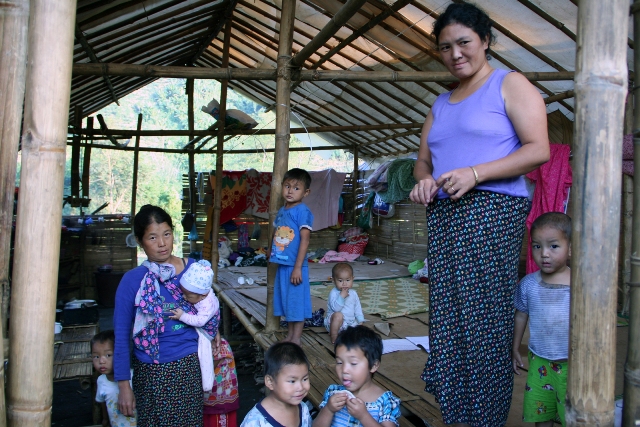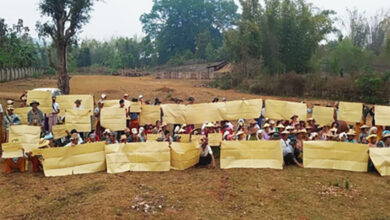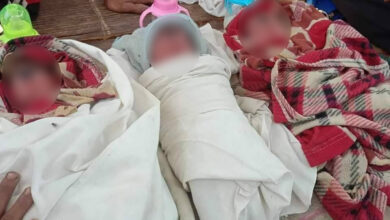FBR: Situation for Kachin Refugees Remains Dire

Thousands of displaced civilians fleeing conflict between the Burma Army and the Kachin Independence Organization (KIO) in Kachin State, now face a life of extreme hardship with little to no access to food, medicine, clothing and in appalling living conditions.
Free Burma Rangers, a frontline humanitarian organization providing medical assistance to internally displaced people (IDPs) in Burma, report that as many as 100,000 Kachin IDPs faced terrible living conditions in the cold mountains of Kachin State, with severe shortfalls in basic supplies of food, medicine and shelter, and in
constant fear for their safety.
“Relief is far below the international humanitarian standard because of ongoing attacks by the Burma Army, insufficient funding and limited access for aid organizations to the remote locations of the IDP camps.”
Fighting started in June 2011 between the Kachin Independence Army (KIA) and the Burma military after a 17 year long ceasefire between the Kachin Independence Organisation and the Burma’s government broke down.
Since the conflict started, the Burma government has been widely condemned for using helicopter gunships, heavy artillery, jet fighters and mortar bombardments in civilian areas, but fighting continues in Northern Shan State and parts of Kachin State.
The FBR raised concerns that the IDP camps were all within artillery and mortar range of Burma Army positions. There are 17 IDP camps situated along the Burma-China Border. Burma Army attacks have taken a significant toll on civilians in Kachin State. In January 2013, heavy 105mm artillery shells hit civilian homes and bomb shelters in Laiza, the capital city of Kachin State, IDPs in a Pang Wa IDP camp were also hit by mortars in May
2012, where children were among those injured by shrapnel. In another incident in October 2012, a seven-year-old boy in a refugee camp on the China side of the border was wounded by Burma Army infantry units.
FBR said that the Burma Army units were firing indiscriminately at people in the camp. Of the 100,000 IDPs, the Refugees Relief Committee (IRRC) estimates that around 75,000 IDPs are officially accounted for, but this does not include IDPs in many other areas, including Myitkyina, Wainmaw, Bhamo, Moe Mauk, Mansi, and Shwegu.
Included in the official IDP count are 15,951 children under 15 years. Life for IDPs is a daily fight for basic necessities needed for their survival. Having left behind their villages, and thus their livelihood, they have no means to earn income and provide for their families. They are left to rely on the assistance of local and international humanitarian organizations, putting their life in an effective state of limbo. FBR said the living conditions for IDP’s has placed an enormous strain on people.
“People residing in camps have become susceptible to strains on family relationships, malnourishment, the spread of infectious diseases, exposure to unsanitary water sources, loss of education, and insufficient medical attention.”
FBR said that the severe food shortages can be and deadly, especially where 30% of children under the age of five are considered malnourished.
FBR noted in their latest report from the frontline that fighting between the KIA (Kachin Independence Army) and the Burma Army continues in southern Kachin State and Northern Shan State.
FBR notes that the Burma Army continues to resupply and reinforce its troops and with the close proximity to the IDPs, the buildup of Burma Army camps and the heavy weapon systems in these areas all pose a constant threat to the lives of thousands of IDPs.




